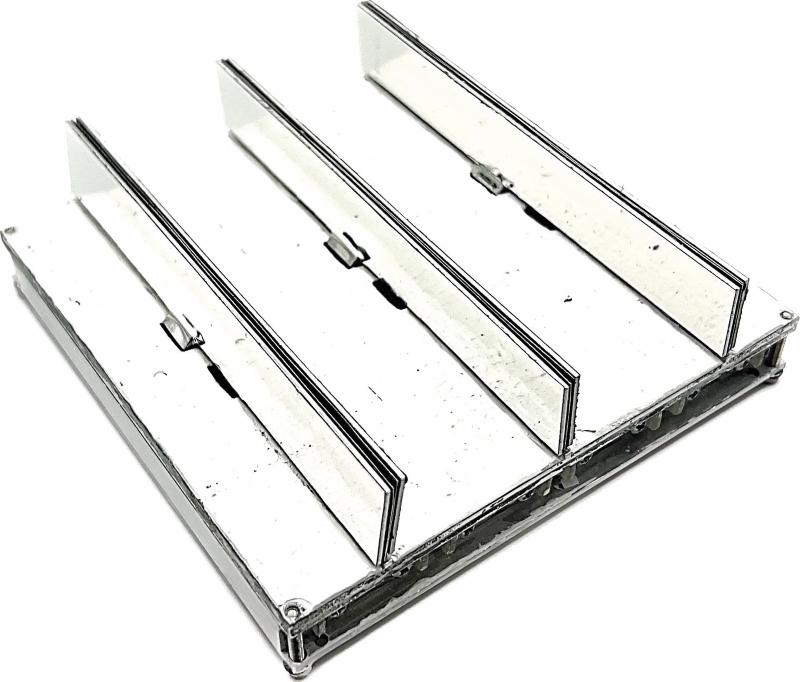Roof tile turns up and down the heat
An adaptive roof tile could lower heating bills in winter and cooling bills in the summer without the need for electronics.

At about 10cm², the passive thermoregulating device is a movable surface that can change its thermal properties in response to a range of temperatures. The target temperature is about 18°C.
Researchers Charlie Xiao, Elliot Hawkes and Bolin Liao from UC Santa Barbara, USA, are hoping to reduce the strain on ageing energy infrastructure from buildings during severe temperatures.
They have developed a louver-based design (fixed or operational blades affixed to a frame) to achieve large spectral switching and say it is relatively easy to design and build.
The team has then leveraged phase-change energy storage materials to create the motion of louvers and cycle states.
The transition occurs between 16.7 and 19.7oC.
Xiao says, 'We use wax motors to change the state of the tiles…When the wax melts, it expands which pushes the piston out, opening the louvers. When the wax freezes, it contracts which pulls the piston back in, closing the louvers...For our tiles, we use hexadecane for the wax. It has a well-defined freezing and melting point so the transition between heating and cooling states occurs over a small temperature range.'
In cooler temperatures, while the wax is solid, the louvers are closed and lay flat, exposing the surface that absorbs sunlight and minimises heat dissipation through radiation. Then as the temperatures reach around 18°C, the wax begins to melt and expand, pushing the louvers open and exposing the surface that reflects sunlight and emits heat.
The paper published in the journal Device, outlines how 'the outer surface of the louvers is a low-infrared-emissive, black-chrome-coated aluminium' at around 5-8μm thick. It has been shown to 'maintain radiative performance after prolonged non-concentrated solar exposure (1,000h) and accelerated UV ageing (1,000h).
'Preliminary testing shows that this coating…reduces sub-ambient cooling at night'.
Under the louvers, the tile’s surface is white, infrared-emissive barium sulphate (BaSO₄) paint, reports the paper on Passively adaptive radiative switch for thermoregulation in buildings. 'BaSO₄-based paints have been recently shown to have excellent radiative cooling performance.'
The louvers’ undersides are covered with an aluminised mylar film that mostly reflects solar and infrared radiation specularly when open.
Xiao continues, 'In addition, we have hexadecane-filled pods within the tile. The large latent heat of phase-change helps keep the tiles at the set-point of about 18°C. The melting process absorbs energy, keeping the tiles cooler, and the freezing process releases the stored energy, which helps keep the tiles warmer. Ultimately, this helps reduce the amount of energy needed for active cooling and heating.'
Testing has demonstrated a reduction in energy cost for cooling by 3.1x and heating by 2.6x, compared with non-switching devices covered with conventional reflective or absorbing coatings.
Xiao says, 'By energetic cost, we mean the amount of heat that needs to be added or removed to keep the tiles within the targeted temperatures...We tested our devices in an environment and time with relatively small temperature variability. We expect to achieve even greater energy savings in environments with greater temperature variability.'
Xiao adds, 'It has the potential to be low cost. It does not require electronics or exotic materials. Wax motors are already mass manufactured for things like washing machines and lawn mowers.'







